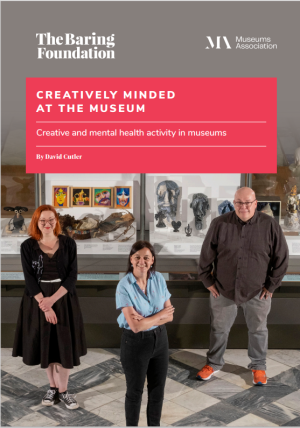This article first appeared in the winter 2024 issue of Art Quarterly, the magazine of Art Fund.
Within any group of people in a gallery or museum it is likely that at least one among them will have experienced some form of trauma. Trauma can result from experiences that are common in many people’s lives, including bereavement or growing up in an unsafe neighbourhood.
As museums, galleries and heritage sites strive to engage new communities and deliver health and wellbeing programmes, we need to have a basic understanding and awareness of trauma. What is it, how does it impact people and why is it relevant to the cultural sector?
Trauma relates to museums and galleries in two ways. The first, is people. We work with communities that we know have lived experience of trauma alongside our daily visitors whose experiences we may not know. And then there is us, the staff. If we want to create environments of genuine care, then the process starts with how we work with each other and the culture we create within our organisations.
The second way relates to the objects that we care for. Many of our collections and exhibitions are linked to traumatic events and histories, such as slavery, war and colonialism. With that comes an institutional responsibility to display and talk about them in a way that seeks to avoid additional harm or distress.
Last year, with help from the Baring Foundation, Manchester Art Gallery delivered a year-long research project that asked the question, ‘What does a trauma-informed gallery look, feel and behave like?’
We worked in partnership with Greater Manchester Rape Crisis, a local mental health charity, Back on Track, and a network of trauma professionals. Together we explored how trauma-informed principles could be applied to gallery practice. In August this year, the gallery was awarded Gallery of Sanctuary status in recognition of its work with families fleeing violence and persecution and its commitment to being a welcoming place of safety for all.
It quickly became clear how important it was for the people with lived experience of trauma to feel safe and welcomed by staff when they walk through the door and as they journey throughout the gallery spaces. When it comes to engaging with emotionally challenging objects, the groups agreed that this wouldn’t be a problem as long as they felt a general sense of safety and support from the various staff they encountered.

What this tells us is that if a museum or gallery wants to be trauma-informed, the work goes far beyond the learning and engagement staff. It includes all those who are public-facing, such as the visitor team, café and retail staff, tour guides and volunteers. And, of course, the senior leadership who set the tone for all of this.
The six principles of trauma-informed practice are: safety; trust; choice and control; empowerment; collaboration; cultural consideration. These are concepts museum and gallery professionals should hold in mind when they plan work for the future. They can ask themselves: ‘Which of these does my organisation do well? Which are we struggling with? Where could we improve? And what help do we need to get there?’ A good first step is training staff to become trauma-aware, which will help them understand that everyone plays a role in making our spaces a place of safety and welcome. Every interaction matters and is an opportunity to convey that their gallery or museum is a place where they are welcome and they belong.
People who have experienced trauma can go through life feeling chronically unsafe, not simply in the physical sense but rather in a state of psychological and emotional threat. They may think to themselves: ‘If I walk through this gallery’s doors, will I be judged? Will I feel accepted? If I don’t know anyone or anything about art, if no one looks or sounds like me, will I still feel like I belong?’ As someone who has experienced trauma, I know it’s not enough for museums and galleries to tell people they belong; it needs to be felt to be believed.
For more information on Louise Thompson’s work on how culture and creativity can improve wellbeing, visit mindfulmuseums.org
Find out more about Manchester Art Gallery’s trauma-informed approach.
With thanks to the Art Fund for permission to republish this article.
